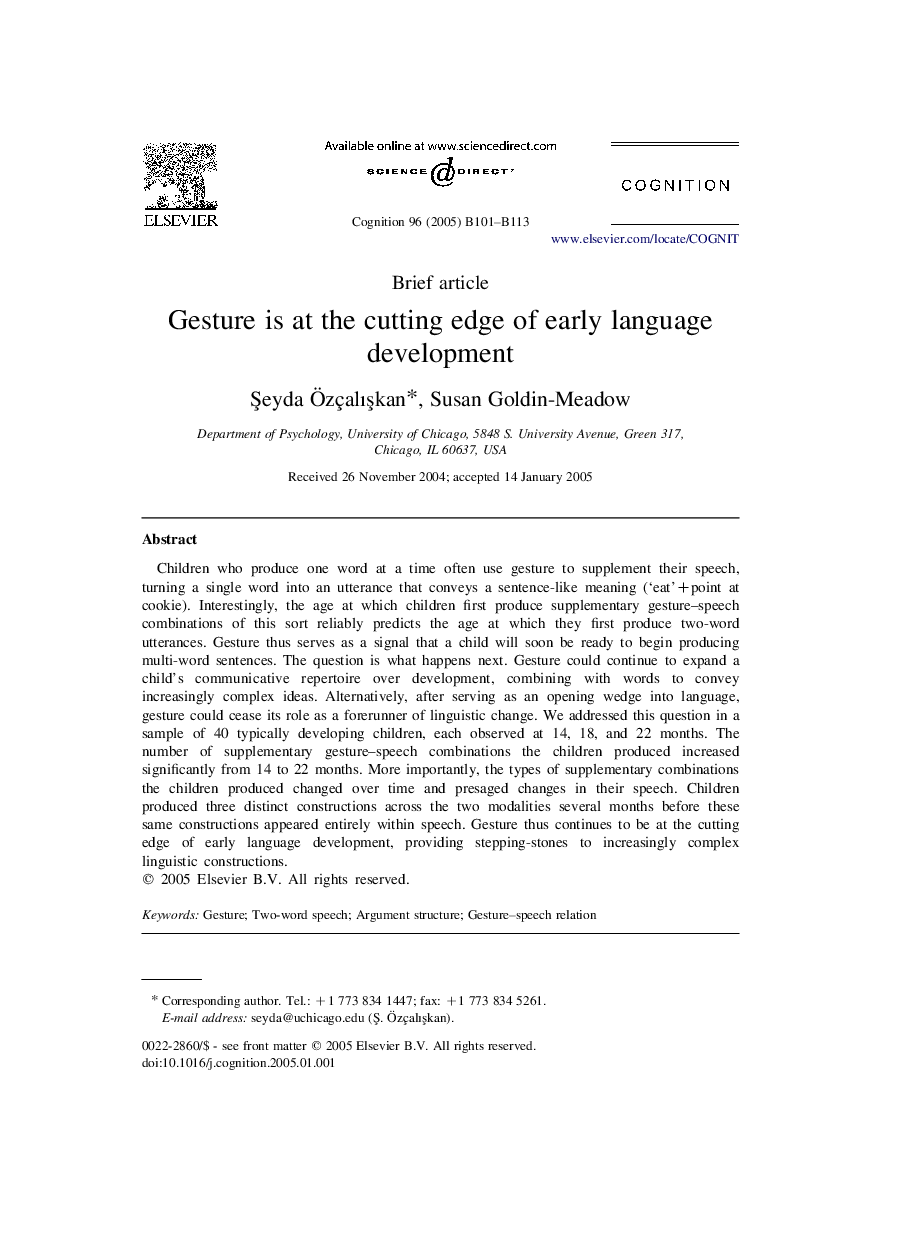| Article ID | Journal | Published Year | Pages | File Type |
|---|---|---|---|---|
| 10458091 | Cognition | 2005 | 13 Pages |
Abstract
Children who produce one word at a time often use gesture to supplement their speech, turning a single word into an utterance that conveys a sentence-like meaning ('eat'+point at cookie). Interestingly, the age at which children first produce supplementary gesture-speech combinations of this sort reliably predicts the age at which they first produce two-word utterances. Gesture thus serves as a signal that a child will soon be ready to begin producing multi-word sentences. The question is what happens next. Gesture could continue to expand a child's communicative repertoire over development, combining with words to convey increasingly complex ideas. Alternatively, after serving as an opening wedge into language, gesture could cease its role as a forerunner of linguistic change. We addressed this question in a sample of 40 typically developing children, each observed at 14, 18, and 22 months. The number of supplementary gesture-speech combinations the children produced increased significantly from 14 to 22 months. More importantly, the types of supplementary combinations the children produced changed over time and presaged changes in their speech. Children produced three distinct constructions across the two modalities several months before these same constructions appeared entirely within speech. Gesture thus continues to be at the cutting edge of early language development, providing stepping-stones to increasingly complex linguistic constructions.
Keywords
Related Topics
Life Sciences
Neuroscience
Cognitive Neuroscience
Authors
Åeyda ÃzçalıÅkan, Susan Goldin-Meadow,
